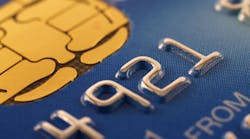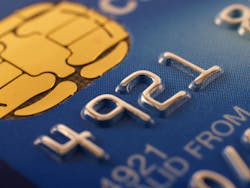5 ways for your dental practice to improve the patient experience through payment methods
Patients expect the latest technology in many venues, including the dental office. Has your practice considered adopting more secure checkout and payment methods? Patients will appreciate your efforts, and they’ll feel more secure when making payments to your practice.
You can improve the customer experience in your dental practice by extending patient care through to the checkout. Adopting advanced payment technology will result in a seamless level of service and consistency of care in every element of your patients’ experience.
Implementing any of the five actionable ideas below will lead to your practice’s longevity and your credibility as a merchant:
1. Ingenico terminals—Since October 2015 it has been a legal, yet slow to enforce, necessity for all businesses, including dental practices, to have the equipment to accept card-present payments with an EMV chip. EMV chips are computer chips within credit and debit cards that replace the old magnetic strip technology and offer a more secure payment service. Use of the EMV chip shifts liability away from merchants in cases of fraud. With card use and time-of-service payments on the rise, adoption of chip and pin terminals is strongly encouraged. The use of EMV in your practice means an added layer of security for your patients.
HIPAA/FIPA compliance encourages this level of protection on patient information, despite its cost, because the liability shift now comes with greater consequences for merchants. Financial security is now considered in all data breaches that compromise patient protection.
RELATED READING:How to successfully collect payment from your dental patients at time of service
2. Virtual merchants—Strongly recommended for those who do not have EMV technology, the virtual merchant acts similarly to EMV technology. Processing a transaction through a virtual merchant encrypts the previously vulnerable magnetic strip. Much like EMV, virtual merchants offer real-time authorization alongside the option to digitize and email receipts and invoices.
Like payment terminals, virtual merchants accept a majority of bank cards. They are web-based interfaces with access across popular operating systems and smartphones. Within its interface, this payment solution has the added benefit of acting as a secure, digital ledger. As a result, the virtual merchant can act as a customer credit vault to provide quick access to customers’ billing information and transaction history.
With the convenience of having your patients’ payments on file, it can be easily accessed and automated. Customer security is maintained through “tokenization,” which will supplement vulnerable information upon processing transactions. Instead of assigning a vulnerable credit card number to your patients, they will be assigned secure client IDs that can be accessed for payments within your individual merchant system.
Initial card information can be secured by Helcim Merchant Services and Credit Card Processing’s secure servers, which allows only these unique card/tokens to be processed to verify new transactions.
3. Smile Savings insurance plans—By accepting this widely used and cost-effective insurance plan for your patients, your business will become optimized for real-time payments, which will elevate the patient experience. Use of this plan excludes the necessity of patient billing and deductibles. As part of patients’ policies, regular visits to the dentist are encouraged in order to obtain the most value from their plan. Consequently, this affords dentists the opportunity to offer continuous care and a standard of experience. These real-time payments, which come with real-time authorization, can be configured to accept a range of payments that adopt EMV technology.
4. Auditing—Along with theadoption of the technology discussed here, it would be considered actionable to implement insurance auditing and patient chart auditing in your business. A patient’s experience can be maintained and monitored by using tokenized payment verification. Auditing allows a business to monitor and assess its growth and security while reassuring patients that they have a vested interest in maintaining their own insurance efficiency. Using the digital ledger, patient treatments can be kept up to date and assessed in order to tailor the customer experience.
5. Mobile pay—Although mobile payments are often limited to $100, it is a simple and secure way to streamline the customer experience. Though some people are dubious about this payment solution’s security, popular services such as Apple Pay require fingerprint and/or passcode verification. Furthermore, Apple Pay adopts encryptions not unlike EMV chips, creating unique security codes and device numbers to counter EMV’s unique transaction numbers. Apple Pay can even be configured to implement your business’s personal loyalty program and rewards system. The adoption of mobile pay services reassures customer’s security concerns, allowing them to leave their credit or debit cards in the security of their own home for the substitution of their smartphones, tablets, and even computers at checkout.
The adoption of these ideas will improve the patient experience through health care automation and will allow you to focus on what matters most—patient care and interaction. These methods are sure to further secure the bond between you and your patients throughout every level of service.
For the most current dental headlines, click here.
Jordan Alexander is the marketing manager for Helcim Inc. merchant services and credit card processing company. Contact him at (877) 643-5246.

